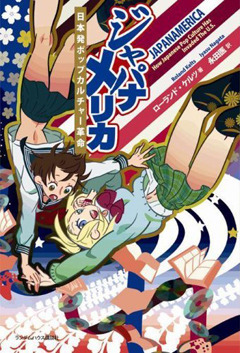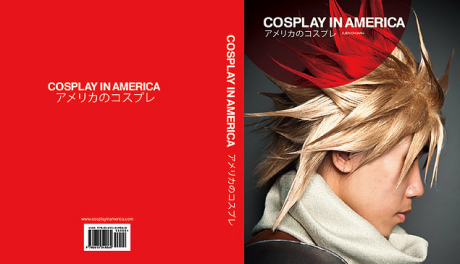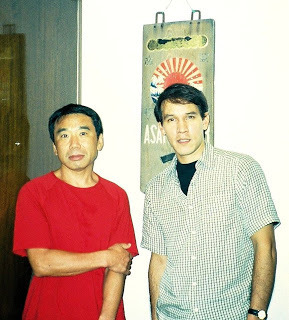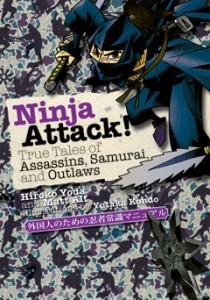Roland Kelts's Blog, page 78
January 12, 2011
Happy Birthday, Haruki Murakami
Buried in blizzard @ Boston
January 6, 2011
Back 'home'
January 5, 2011
Happy Birthday, Hayao Miyazaki
Master director, animator and artist Hayao Miyazaki turns 70 today. Here's a clip of our onstage conversation at UC Berkeley.
O-tanjoubi omedetou gozaimasu / Happy Birthday, Miyazaki-san.
Hayao Miyazaki is 70 today
Master director, animator and artist Hayao Miyazaki turns 70 today. Here's a clip of our onstage conversation at UC Berkeley.
O-tanjoubi omedetou gozaimasu / Happy Birthday, Miyazaki-san.
December 30, 2010
My Hero: Ultraman Taro @ Tokyo Tower ...
Happy New Year
December 28, 2010
Japanamerica in BEST OF 2010, US & JP
 Yoshi Domoto - Executive Director, Japan-America Society of Georgia"Japanamerica: How Japanese Pop Culture Has Invaded the U.S. " by Roland Kelts
Yoshi Domoto - Executive Director, Japan-America Society of Georgia"Japanamerica: How Japanese Pop Culture Has Invaded the U.S. " by Roland Kelts Roland Kelts visited Kennesaw State University in March 2010 for a lecture event, which was organized by KSU's Dr. Edward Chan and Atsuo Nishikata, the chair of the Japan-America Society of Georgia's Young Professionals group. The JASG was a promotional partner of the event and many of our members enjoyed the lecture very much. Roland Kelts has both Japanese and American ancestry like myself, and I was particularly interested in his views of the relationship between Japanese and American pop culture.
The book gave me a better understanding of how Japanese popular culture developed to what it is today and how it has spread across the world. Although Japan is still a huge contributor to the world economy, its cultural influence, especially its pop culture, may now be more influential. Japanese pop culture has spread throughout the world and has defined what is "cool" in many countries (the theme of JapanFest 2009 in Atlanta was "Cool Japan" and attracted over 17,000 visitors). Manga and anime alone are now a multi-billion dollar industries in the U.S. Japanese pop culture is everywhere you look these days and I think it is important for The Japan-America Society to be part of this trend and use the influences of Japanese culture to bring together the Japanese and American communities here in Georgia.
I highly recommend this book. It is a very easy and fun read and it will give you a better appreciation for how popular culture has evolved and how it will continue to evolve.
In JP:『日本辺境論』 内田樹著、新潮社刊
日本人とは辺境人である――「日本人とは何ものか」という大きな問いに、著者は正面から答える。常にどこかに「世界の中心」を必要とする辺境の民、それが日本人なのだ、と。丸山眞男、澤庵、武士道から水戸黄門、養老孟司、マンガまで、多様なテーマを自在に扱いつつ日本を論じる、日本論の金字塔

『ジャパナメリカ 日本発ポップカルチャー革命』 ローランド・ケルツ著、永田医訳 武田ランダムハウスジャパン刊
V・S氏 クランチロール株式会社40代、男性、アメリカ
友人に薦められて読みました。アメリカ人がアメリカ人向けに書いた本ですが、日本語翻訳版も出ています。
クランチロールは世界で一番大きなアニメ・ソーシャル・ネットワークを運営し、日本のアニメを中心とするアジアのコンテンツを世界に配信するベンチャー企業です。私の会社はその日本法人で、08年に設立されたばかり。新丸の内ビルにある日本創生ビレッジにオフィスを置く若い会社です。私の仕事は、人気のタイトルを日本での放映後すぐインターネット配信できるよう、ライセンサーと交渉し、正式契約まで持っていくこと。ただ、私自身はアニメファンというわけではないので、「最新のエピソードをいち早く見たい!」という熱心なファンの気持ちを理解するために、この本を読んだのです。
単に、日本のマンガやアニメが"クール"だという話だけでなく、日本のアニメがアメリカでどんなふうに受容されているか、日本の文化がアメリカの文化にどんな影響を与えてきているかにも触れており、なかなか面白かったです。
ローランド・ケルツ著、永田医訳 武田ランダムハウスジャパン刊
『ガッチャマン』『ポケモン』『トトロ』から『ハルキ・ムラカミ』まで――日本のポップ・カルチャーはクールだ! なぜ、今、マンガとアニメがアメリカで受けるのか?浮世絵、禅に続く、日本文化偏愛の「第三の波」を、日米の最前線からリポート
December 23, 2010
Last Yomiuri column of 2010
December 21, 2010
Cosplay in America, Ninja Attack, Schoolgirl Confidential

Ishihara's big bill
Last Friday, after ramming through Bill 156—the so-called "non-existent youth bill" targeting manga and anime imagery while exempting live action photography and video, not to mention live human beings who actually possess child pornography—Tokyo governor Shintaro Ishihara, the former taboo-busting novelist turned moralist politico, claimed in his monthly press conference that Japan had become "too uninhibited" compared with "Western societies," and added that readers of offending manga had "warped DNA."
The subsequent decision by ten top manga publishers to boycott next year'sTokyo International Anime Fair (TAF), slated for March 24-27, amounts to an unusual act of corporate protest in normally conflict-shy Japan, prompting Japan's otherwise reticent Prime Minister, Naoto Kan, to post his first message under his own name, pleading for both sides to find a resolution.

TAF 2011: ripe for China?
No wonder: reports out of this year's TAF were dominated by the arrival of several Chinese anime producers on the scene. Next year, they may have the floor all to themselves.
Given such dire prognostications, it may be better, or at least more fun, to look back at a few of 2010's gift-worthy Japanese pop culture publications. The folks at Kodansha International help us decode two of the most ubiquitous icons of Japanese pop imagery—schoolgirls and ninja—vis-à-vis two authoritative husband-and-wife teams. Wired magazine contributing editor Brian Ashcraft and his wife Shoko Ueda, based in Osaka, bring us Japanese Schoolgirl Confidential, a surprisingly capacious work that covers every permutation of the uniformed femmes in manga, anime and flesh and blood live action, fatale or not, even recording the history of the Sailor Moon-style uniform itself, imported from the US by a fast-militarizing Japan at the turn of the century.
Another conjugal pair, Matt Alt and Hiroko Yoda, having already enlightened us about Japanese ghosts (Yokai Attack!) and everyday cartoon characters (Hello, Please!), turn their lucid lenses to the myths and realities behind Japan's irresistible secret agents, spies and assassins in Ninja Attack!. Revealing what true ninja actually wore (not the sleek black uniforms and masks of popular rendering, of course, because they tried to blend into their surroundings—duh), ate, brandished and so on, the book admirably balances the seductions of ninja fiction with the astonishments of historical truth. (Did you know, for example, that Matsuo Basho, Japan's most renowned haiku master, may have served time amid his nomadic wanderings as a spy for the shogunate?)
Both books are tidy, lightweight and colorfully designed paperbacks with ample illustrations and photographs that won't alienate or bore manga and anime enthusiasts keen for visual aids. Concise sidebar definitions, diagrams and cartoon bubbles keep the layout fresh and inventive, enabling readers to dip in and be edified at random.

"Western societies" go crazy for cosplay
At the other end of the scale is the substantial hardcover photography collection,
>>also @ TCJ









